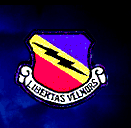 | |||
 | |||
 | |||
 | ||
CHAPTER 13 During the first week of October 1990, an Gen. Horner and his staff decided they had seen enough. A three-day stand-down was ordered. We had been working nonstop since our arrival, and, clearly, had approached the edge of the
envelope. A few days of rest and relaxation now would pay dividends later on. Flying resumed on Saturday, 13 October, but Gen. Horner now restricted all aircraft in theater from going below 1,000 feet. I understood the rationale behind Gen. Horner's decision, but to train properly with LANTIRN and to continue developing sound night tactics, we needed to get down at least to 500 feet. During the second week of October, our squadron commander, Lt. Col. Bill Cottingham, was
relived of his duties. Squadron morale had been extremely poor of late, and cliques in the pilot group had torpedoed the unit's cohesiveness. LANTIRN pilots from the 34th TFS continued to feel their squadron should have been chosen to deploy.
| ||